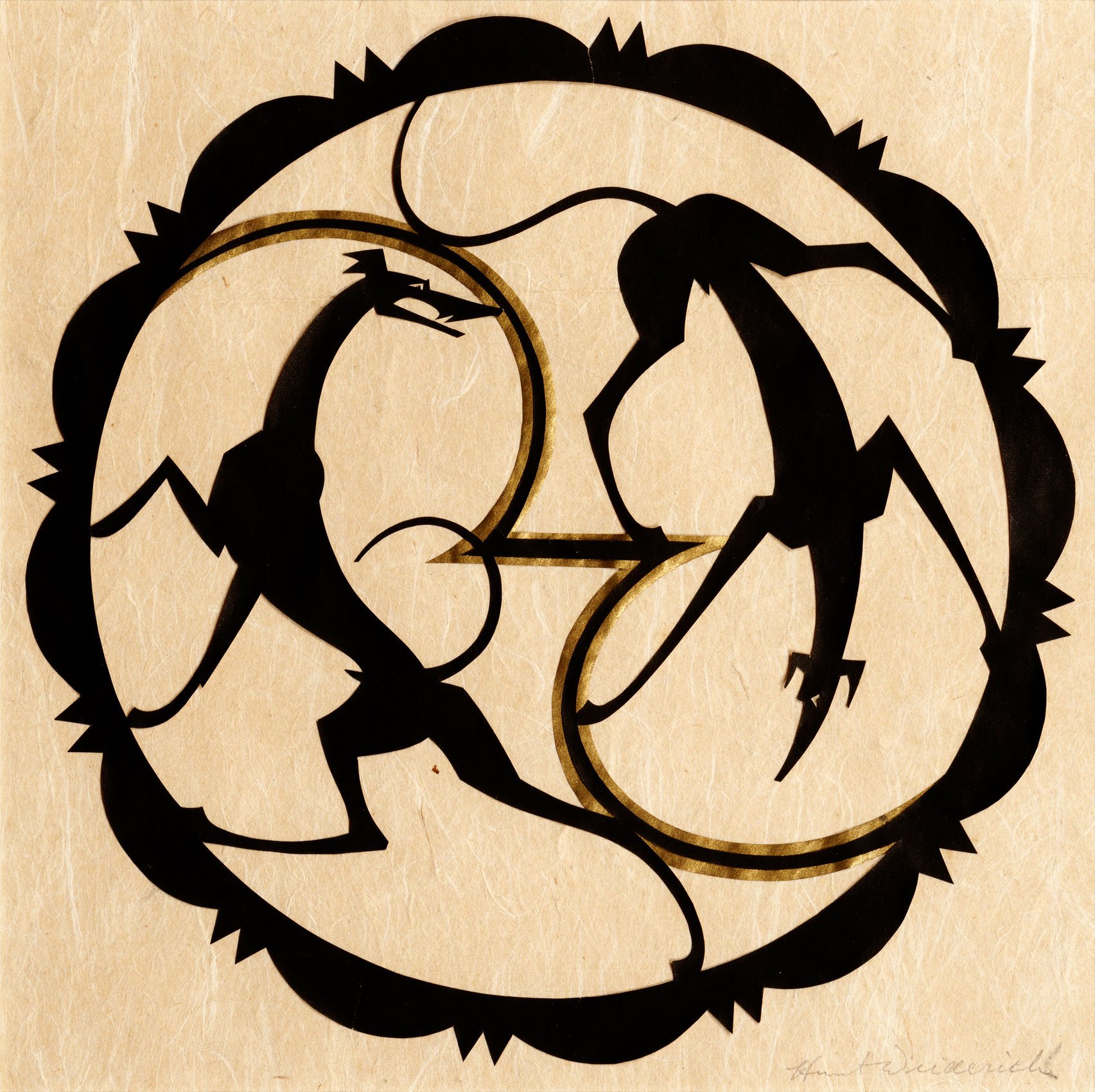W. HUNT DIEDERICH (1884-1953)
Available Work | Biography
Biography • W. Hunt Diederich (1884-1953)
W. Hunt Diederich was born on a great estate in Austria-Hungary in 1884. His mother, Eleanor Hunt, was American and the daughter of the noted Boston artist, William Morris Hunt. His father, Colonel Ernest Diederich, died in a hunting accident when Hunt was only three. His only recollection of his father was that he was devoted to horses and dogs. These animals became the subjects for the young boy's cut-out paper silhouettes that he started creating at the age of five. Animals in silhouette form would remain a constant theme throughout his life.
Diederich was educated in Switzerland where he spent holidays on mountain excursions and other outdoor activities around Lake Geneva. At age 15, full of romance and enthusiasm, he and his brother were sent to school in Boston at Milford Academy. Following his penchant for open spaces and adventure, he traveled out to the wide ranges of Arizona, New Mexico and Wyoming. In Wyoming he lived on his cousin's ranch where his love for animals and the unbounded freedom of life on the ranch were nurtured.
His interest in art brought him back to the East where he enrolled at the Pennsylvania Academy of the Fine Arts. It was there that he met Paul Manship, who was to become a long-time friend. The two spent a summer exploring Europe, and when Manship returned to America, Diederich went on to Africa where he was impressed by the natural landscape and roaming wildlife. In Morocco Diederich studied ceramic techniques that he would bring back to America and develop throughout his life. He then began a ten year period of travel and work in Europe.
In the early teens, Diederich rented a studio in Paris and studied with the renowned animal sculptor Emmanuel Frémiet. He quickly became part of the Parisian art world, fraternizing with artists such as Elie Nadelman, Jules Pascin, and Ferdinand Léger. In 1913 Diederich showed his Greyhounds at the Salon d'Automne, where the piece was praised by the French critics Guillaume Apollinaire and Louis Vauxcelles. In 1920 Diederich had his first exhibition in the United States at the Kingore Gallery, where he showed eighty-eight works, mostly of animals or sporting subjects.
Diederich's interests were very much in keeping with the philosophy of William Morris, that is in making necessary objects beautiful. Aside from sculpture, he created firescreens, fountains, lamps, ceramics, chimney pots, and gates. His subjects were primarily stylized animals, abounding with energy, created with love and therefore imbued with life. He believed that it was essential for an artist to develop a distinctive style, and Diederich most eloquently accomplished this in his paper silhouettes and metal cut-outs. With his silhouettes Diederich was able to take a genteel Nineteenth century technique and turn it into something wild, dynamic and modern.
Upon returning to New York in 1921, Diederich moved into a studio at 50 ½ Barrow Street in Greenwich Village with George Biddle. Diederich's work was in extremely high demand and Ferargil Galleries became his New York art dealer. The Metropolitan Museum of Art, the Whitney Museum and the Newark Museum all purchased his work during the 1920's.
In 1928, while working on a ladder in the castle he owned in Germany, Diederich fell and broke his leg. Although this incident slowed him down for several years, by 1934 he was back to his busy schedule of exhibiting and doing commission work. That year he landed a major commission to create iron signs and weathervanes for the Central Park Zoo in New York City. Important commissions also came from the WPA program for work at the Bronx Zoo, the Forest Hills train station and a large sculpture entitled Pegasus with Messenger for the Westwood, New Jersey Post Office in 1938. In addition to these public commissions, Diederich had important private commissions, including one in 1936 for Mr. Forbes Hawkes's Long Island home, The Hutch.
Hunt Diederich continued to exhibit successfully through the 1940's and into the 1950's, both in Europe and in America. In 1953 Diederich was in the middle of an important bas relief commission with Henry Varnum Poor and Carl Walters for the American Society of the Prevention of Cruelty to Animals, located at 441 East 92nd Street in New York, when he passed away. Posthumously the artist was honored in exhibitions at the Museum of American Folk Art in 1973, the Cranbrook Academy of Art in 1975, and with one-man shows at the Whitney Museum of American Art in 1991 and D. Wigmore Fine Art, Inc. in New York in 2005.


